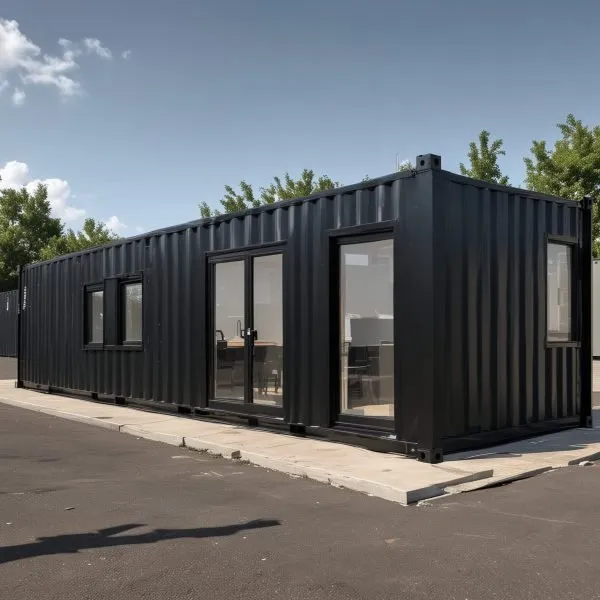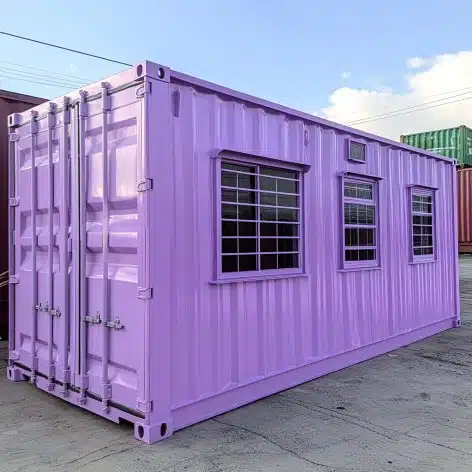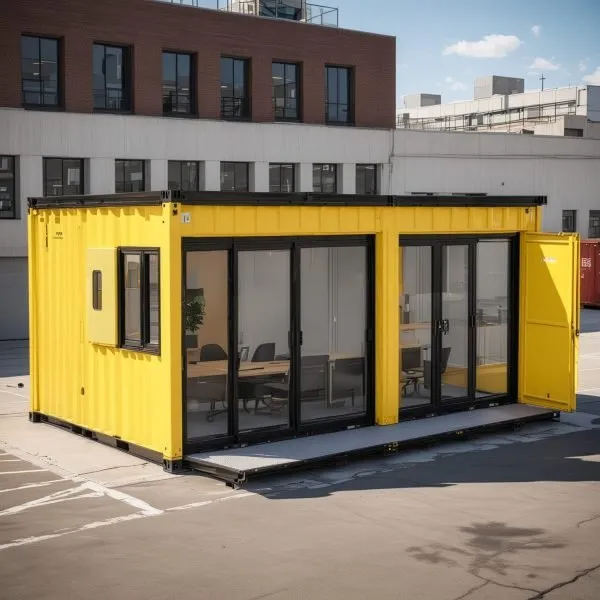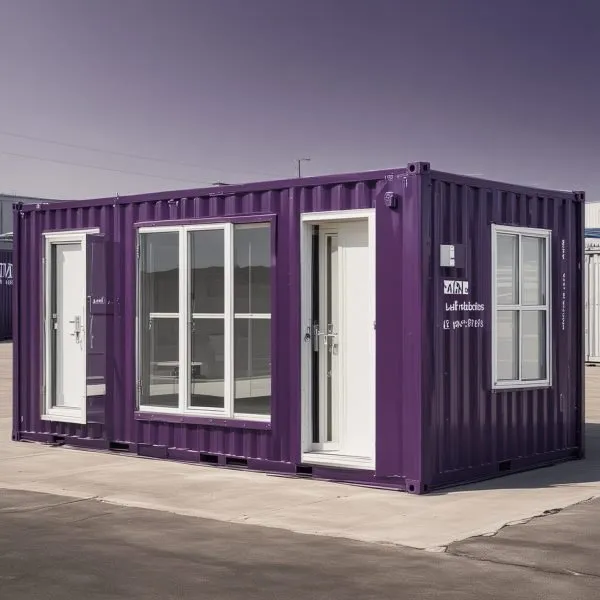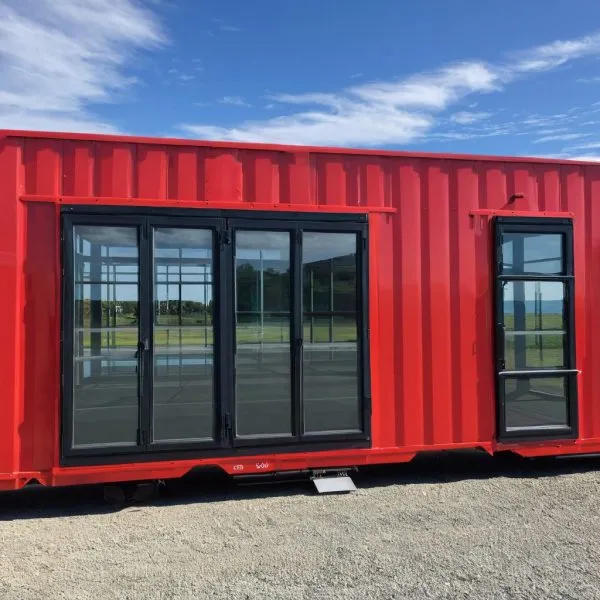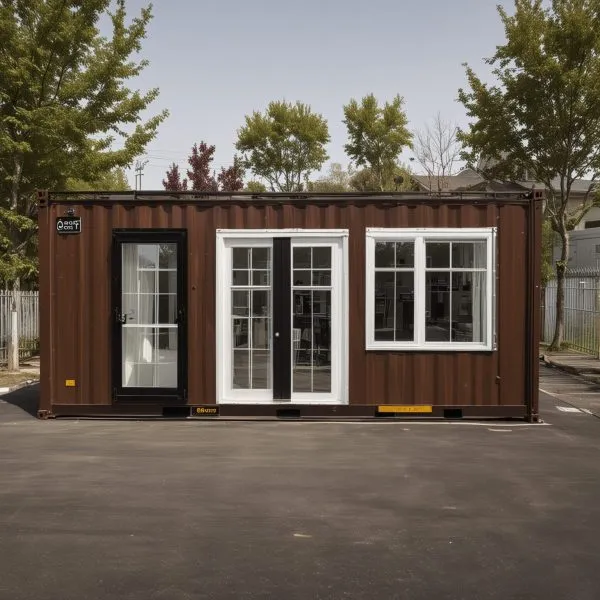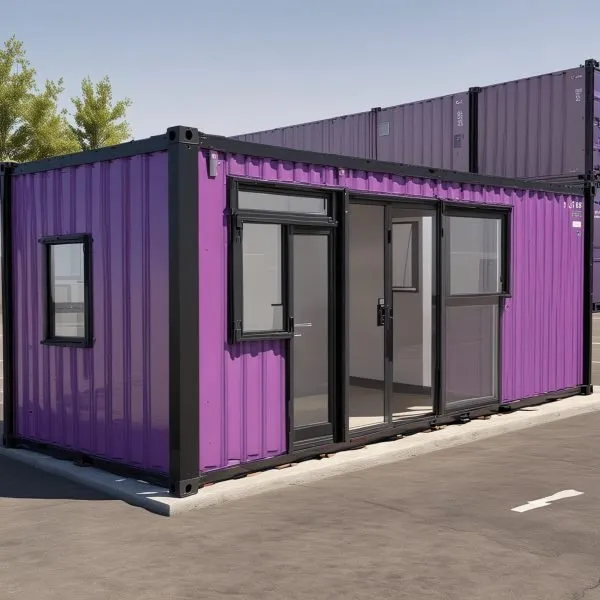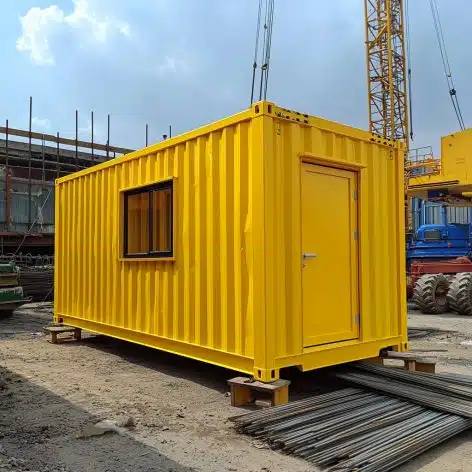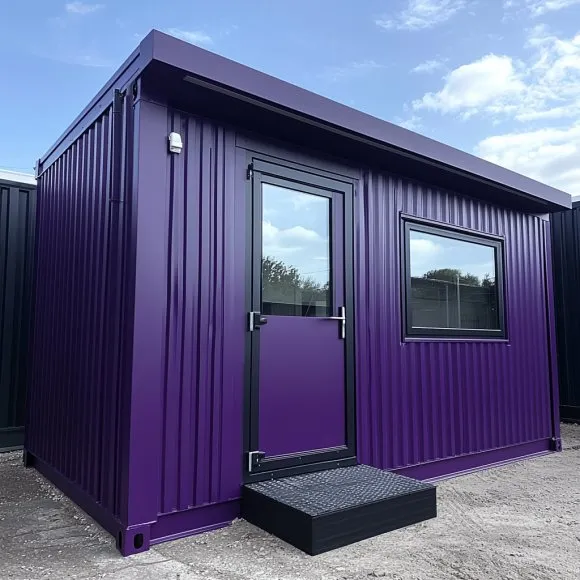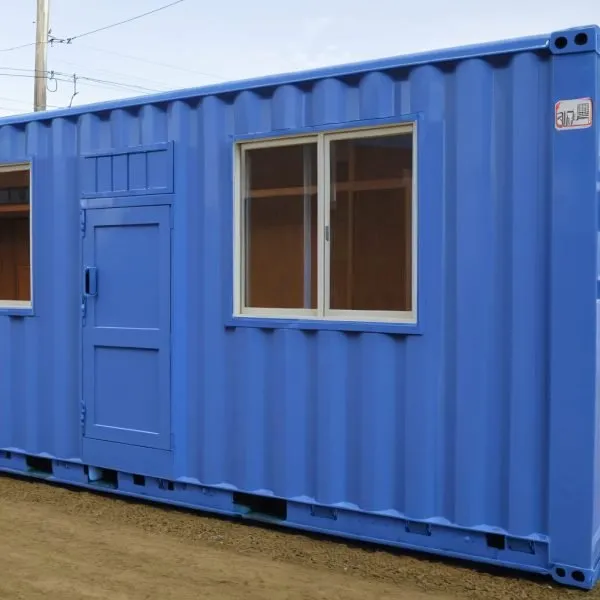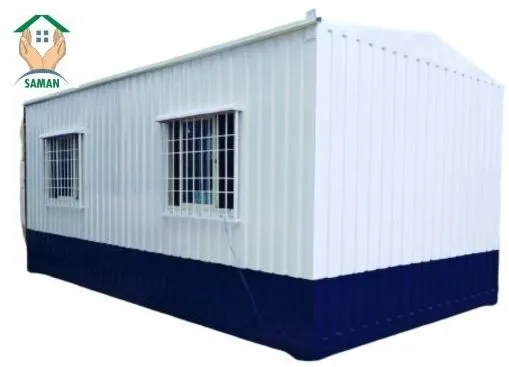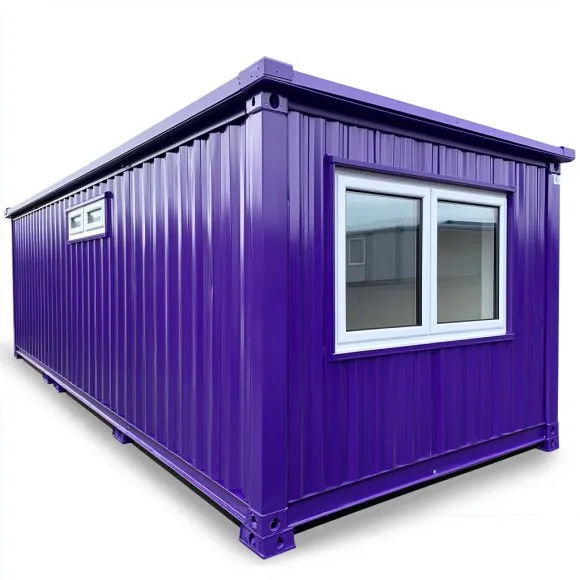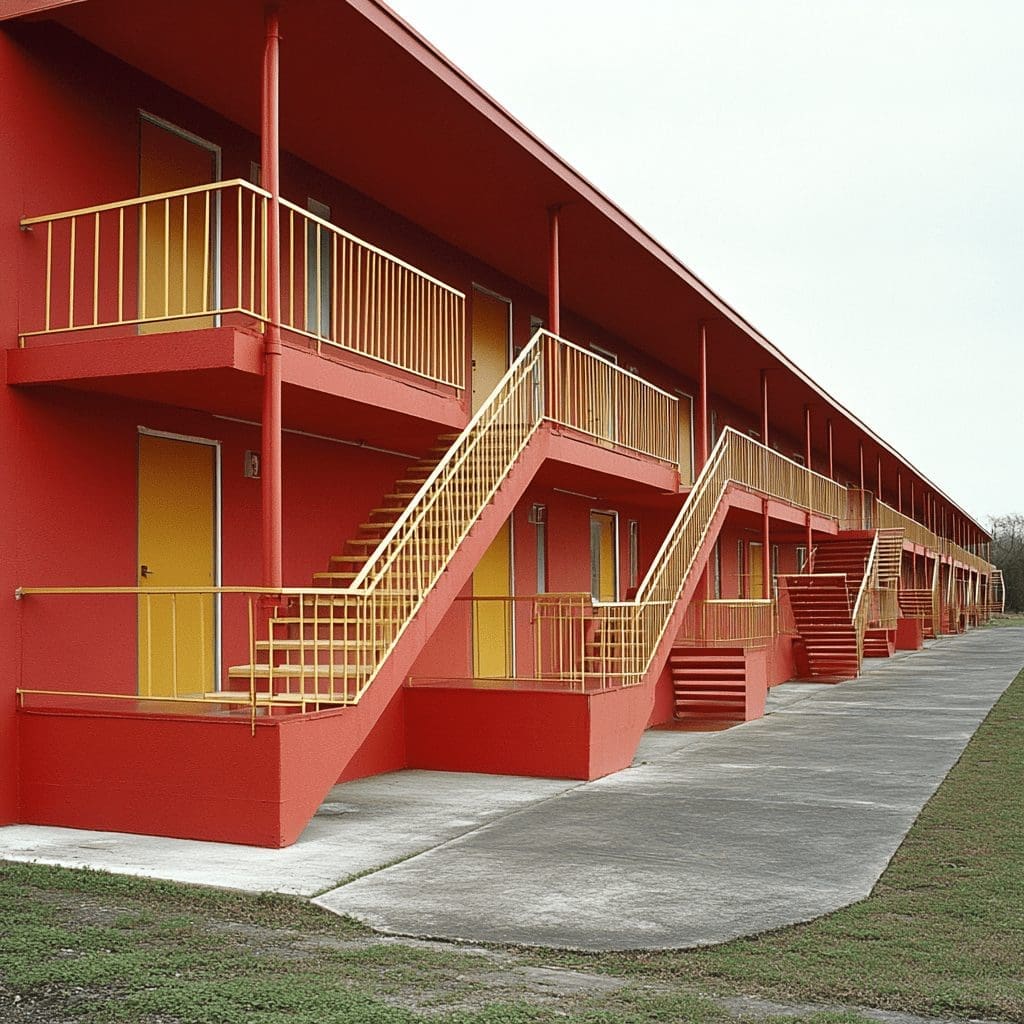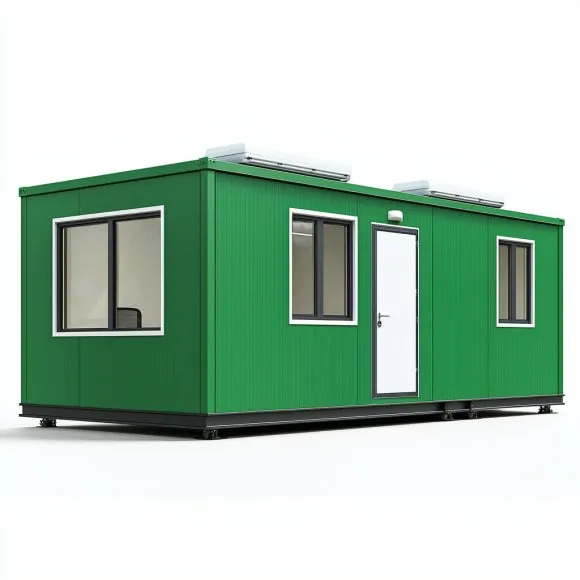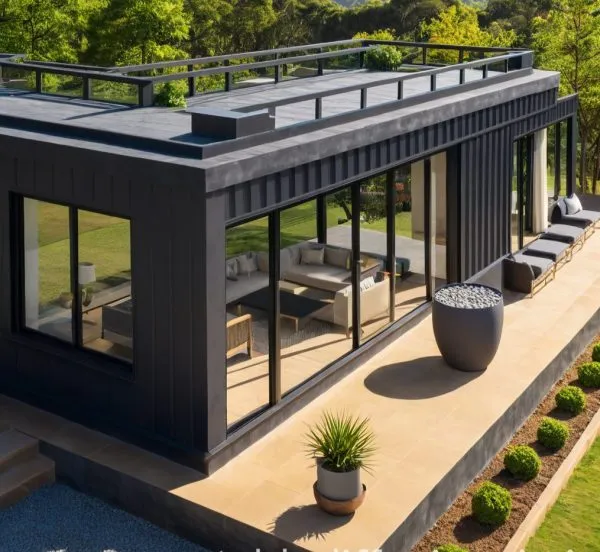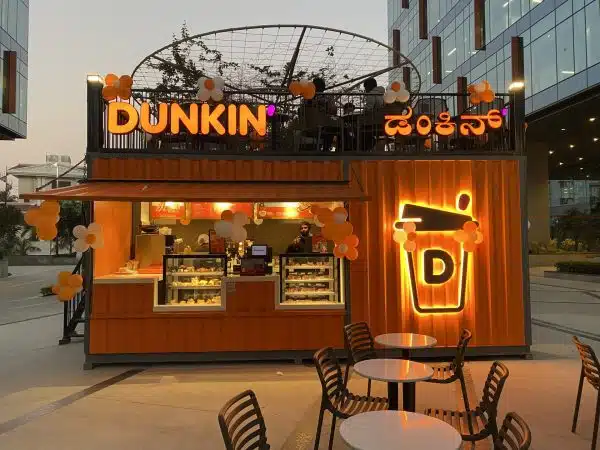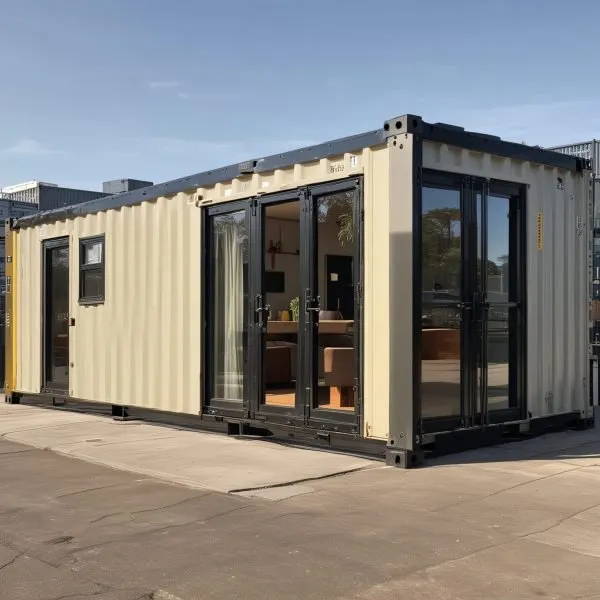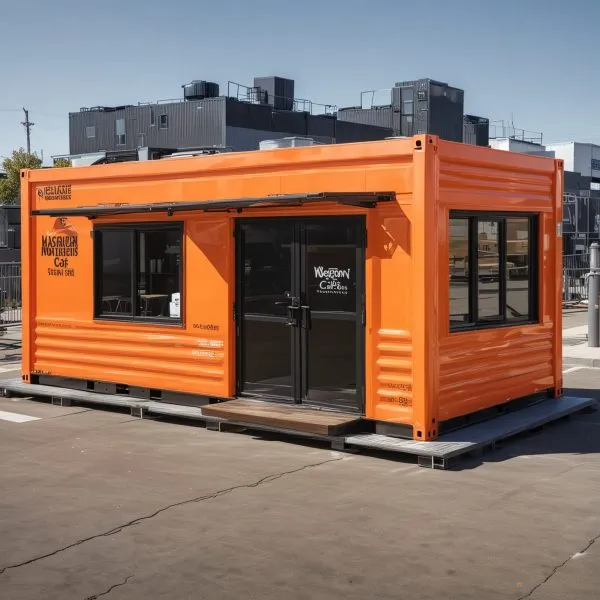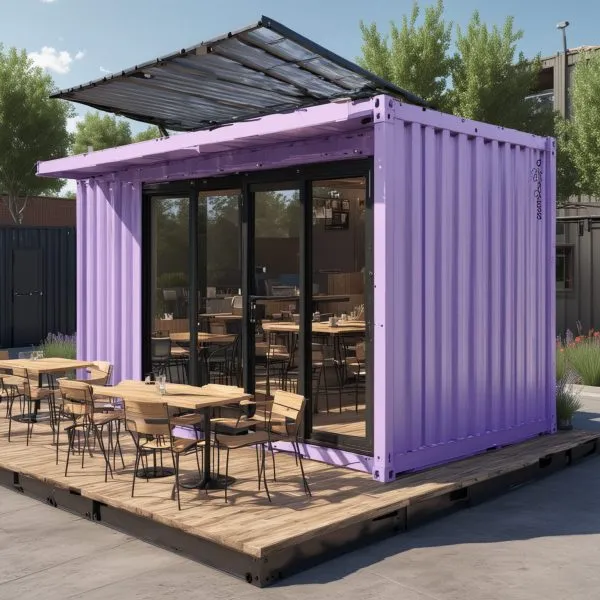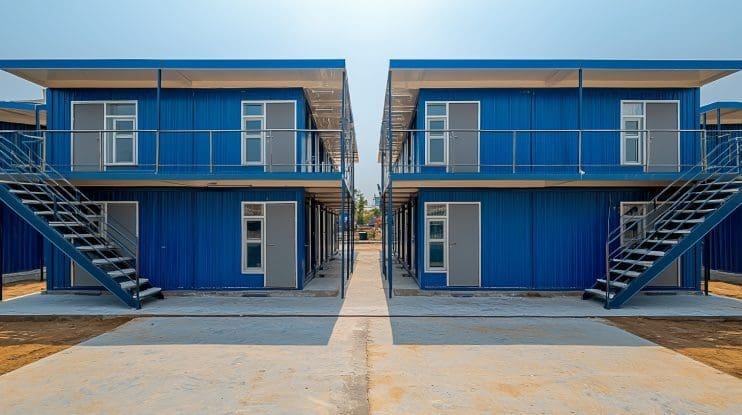10 Key Advantages of Prefabricated Labor Colonies for Construction Sites
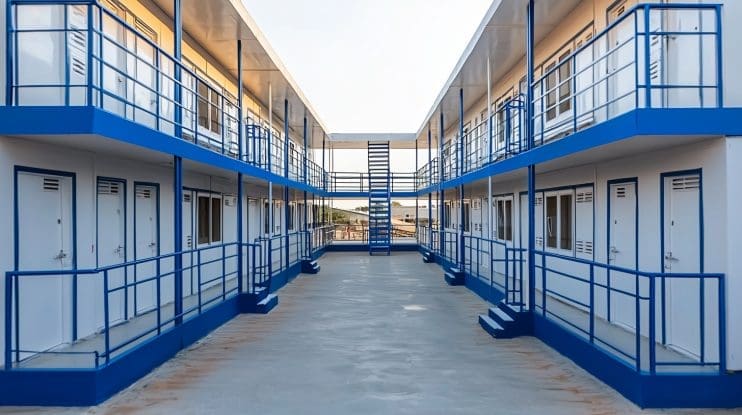
Introduction: Revolutionizing Worker Housing with Prefabricated Labor Colonies
Prefabricated labor colonies are transforming how companies house their workers. These colonies are designed for quick setup and offer a reliable way to provide safe and comfortable living spaces. This is especially important for construction sites in remote areas, where traditional housing options may not be practical.
One of the biggest advantages of prefabricated colonies is speed. Traditional buildings can take months to complete, causing delays in getting workers settled. Prefabricated options arrive on-site ready to assemble, meaning less time waiting and more time working. This quick installation helps keep projects on schedule.
Another benefit is worker comfort. Prefabricated colonies include essential features like proper ventilation and secure living spaces. When workers are comfortable, they perform better on the job. Providing quality housing shows that the company values its workers, which can boost morale and productivity.
In addition to speed and comfort, these colonies are also cost-effective. They are typically less expensive to construct than traditional buildings. This makes them an attractive option for companies looking to save on housing costs without sacrificing quality.
Prefabricated labor colonies offer innovative housing solutions for construction sites. Explore Prefab Labor Colonies to understand their impact on worker accommodations.

Two-storey prefab labor colony with white GI frames, blue handrails
Speed of Installation: Reducing Project Timelines
Labor colonies offer a significant advantage in speed of installation. These colonies are constructed off-site and then brought to the project location. This process greatly reduces the time needed to set up housing for workers. Traditional construction methods can take months, but prefabricated colonies can be assembled and ready for use in a matter of weeks.
The quick installation process is crucial for projects with tight deadlines. By choosing prefabricated options, companies can avoid delays and keep their projects on track. Workers can be housed quickly, allowing them to start their tasks without unnecessary waiting. This efficiency is particularly valuable in industries where staying on schedule is essential to success.
Moreover, the speed of installation does not come at the cost of quality. Prefabricated labor colonies are built in controlled environments, ensuring that each unit meets high standards before arriving on-site. This controlled process minimizes errors and defects, resulting in reliable and durable housing for workers.
Finally, the ability to quickly install these colonies means that companies can respond rapidly to changes in project needs. If more workers are required, additional units can be added without disrupting the timeline. This flexibility is a key benefit of prefabricated labor colonies, making them a smart choice for dynamic construction environments.
Cost Efficiency: Maximizing Budget Utilization
Cost efficiency is one of the top reasons companies choose prefabricated labor colonies. These colonies are typically less expensive to build than traditional structures. Since most of the work is done off-site, labor and material costs are significantly reduced. This makes prefabricated options a more budget-friendly choice for many construction projects.
Initial savings on construction are just the beginning. Prefabricated labor colonies are also designed for durability, which means they require less maintenance over time. The materials used are often more resilient, reducing the need for frequent repairs. This leads to lower ongoing costs, further enhancing the cost-efficiency of these colonies.
In addition to direct cost savings, the reduced construction time associated with prefabricated colonies can result in financial benefits. Projects that stay on schedule avoid the penalties and additional expenses that come with delays. By minimizing downtime and maximizing efficiency, prefabricated colonies help companies make the most of their budgets.
Another advantage is the flexibility in budget allocation. Money saved on construction and maintenance can be redirected to other critical areas of the project, such as equipment upgrades or workforce training. This strategic use of funds helps companies achieve their goals while keeping costs under control.

Triple-storey prefab labor colony with brown GI frames and 20 rooms in a high-altitude project.
Environmental Sustainability: Building with a Smaller Carbon Footprint
Environmental sustainability is increasingly important in today’s construction industry. Prefabricated labor colonies offer a greener alternative to traditional construction methods. These colonies use eco-friendly materials and processes that help reduce the overall carbon footprint of a project. For companies looking to meet sustainability goals, prefabricated options are a smart choice.
One of the key ways prefabricated labor colonies contribute to sustainability is by minimizing waste. The controlled environment in which these colonies are built allows for precise material usage, reducing the amount of waste produced during construction. Additionally, many of the materials used in prefabrication are recyclable, further lowering the environmental impact.
Energy efficiency is another important factor. Prefabricated labor colonies are often designed with features like high-quality insulation and energy-saving systems. These elements reduce energy consumption, which not only benefits the environment but also lowers operating costs. For companies, this means achieving sustainability goals without sacrificing financial performance.
Moreover, the use of sustainable materials and practices in prefabricated colonies can enhance a company’s reputation. As more clients and customers prioritize environmental responsibility, companies that invest in sustainable solutions can gain a competitive edge. Prefabricated labor colonies help businesses meet both their environmental and economic objectives.
Flexibility and Scalability: Adapting to Project Needs
Flexibility is crucial in construction projects, and prefabricated labor colonies excel in this area. These colonies are designed to be easily expanded or modified as project needs change. Whether a project grows in scope or the workforce size fluctuates, prefabricated colonies can adapt quickly to meet these demands.
One of the key features of prefabricated labor colonies is their modular design. This design allows companies to add or remove units as needed without significant delays. For example, if a project requires additional workers, more living spaces can be added quickly. This flexibility ensures that companies can respond to changes without disrupting the overall timeline.
Scalability is another major benefit. Prefabricated colonies can be scaled up or down depending on the size and scope of the project. This makes them an ideal solution for both large infrastructure projects and smaller construction sites. The ability to adjust the size of the colony as needed helps companies manage resources more effectively.
Customization is also a key aspect of flexibility. Prefabricated labor colonies can be tailored to meet the specific needs of a project or workforce. This might include choosing different layouts, adding communal spaces, or incorporating specific amenities. The ability to customize ensures that the housing meets the exact requirements of the workers and the project.

L-shaped double-storey prefab labor colony with red GI frames, black handrails, and 16 rooms at a solar farm.
Enhanced Safety and Compliance: Meeting Industry Standards
Safety is a top priority in any construction project, and prefabricated labor colonies are designed with this in mind. These colonies meet or exceed industry safety standards, ensuring that workers are protected. From fire safety systems to secure access controls, every aspect of safety is carefully considered.
Compliance with local and international regulations is another critical factor. Prefabricated labor colonies are built to adhere to these standards, reducing the risk of legal issues. Companies can be confident that their worker housing is up to code, avoiding potential fines or shutdowns. This focus on compliance also demonstrates a commitment to worker well-being, which can boost morale.
In addition to meeting safety standards, prefabricated colonies offer enhanced security features. These can include surveillance cameras, secure entry points, and emergency response systems. By providing a safe and secure living environment, companies can ensure that workers feel protected and valued, leading to better job satisfaction and productivity.
Moreover, the standardized construction process of prefabricated colonies ensures consistent quality across all units. This consistency reduces the risk of defects that could compromise safety. With prefabricated solutions, companies can provide high-quality, safe housing that meets all necessary standards.
Worker Well-Being: Creating Comfortable Living Spaces
Creating a comfortable living environment is essential for worker well-being, and prefabricated labor colonies are designed with this goal in mind. These colonies include features that support both the physical and mental health of workers, such as proper ventilation, climate control, and ergonomic living spaces.
Comfortable housing directly impacts worker morale. When workers have a safe and comfortable place to live, they are more likely to be satisfied with their jobs. Prefabricated labor colonies offer secure rooms, clean facilities, and, in some cases, additional amenities like communal areas or recreational spaces. These features help workers relax and recharge after a day on the job.
Providing high-quality housing also reduces turnover. Workers are more likely to stay with a company if they are satisfied with their living conditions. This stability benefits the company by reducing the costs associated with recruiting and training new employees. By investing in worker well-being through prefabricated colonies, companies can build a more loyal and productive workforce.
Furthermore, the design of these colonies often includes spaces that promote social interaction, such as dining halls or lounges. These communal areas help build a sense of community among workers, which can further enhance job satisfaction. Prefabricated labor colonies offer a holistic approach to worker well-being, combining comfort, security, and social support.
Comfortable living spaces in prefabricated colonies boost worker morale. Learn About Worker Comfort and how these colonies enhance well-being.

Single-storey prefab labor colony with white GI frames, yellow doors, and 10 rooms at a coastal site.
Portability and Relocation: Moving with the Project
Portability is a key advantage of prefabricated labor colonies. These units are designed to be easily relocated as projects move from one site to another. This flexibility is especially valuable for companies that work on long-term or multi-site projects.
Traditional buildings are difficult and costly to move, but prefabricated colonies can be relocated quickly and efficiently. This reduces the need for new construction at each site, saving time and money. By using portable colonies, companies can provide consistent housing for their workers, no matter where the project takes them.
The ease of relocation also means that workers experience less disruption. They can continue living in the same comfortable and familiar environment, even as the project site changes. This stability helps maintain worker morale and productivity, as they do not have to adjust to new living conditions with each move.
Additionally, the ability to move these colonies allows companies to respond quickly to changes in project needs. If a project is extended or a new site is added, the existing housing can be relocated without delay. This flexibility makes prefabricated labor colonies an ideal solution for dynamic construction environments.
Durability and Weather Resistance: Built to Last
Durability is a crucial factor in the design of prefabricated labor colonies. These colonies are constructed with high-quality materials that are built to last. This ensures that they can withstand the harsh conditions often found on construction sites, such as extreme temperatures, heavy rain, or strong winds.
Weather resistance is a key feature of these colonies. They are designed to maintain their structural integrity in various weather conditions, ensuring that workers remain safe and comfortable. For example, the materials used in construction are selected for their ability to resist damage from heat, cold, and moisture. This makes prefabricated colonies a reliable choice for long-term projects.
The durability of prefabricated labor colonies also means that they require less maintenance over time. This reduces the need for repairs and replacements, saving companies money in the long run. The use of durable materials ensures that the colonies remain functional and secure throughout the project.
Moreover, the long-lasting nature of these colonies allows them to be reused for multiple projects. After one project is completed, the colonies can be relocated and used again, providing a sustainable housing solution. This reusability further enhances the cost-effectiveness of prefabricated labor colonies, making them a smart investment for any company.
Learn more about the durable construction of prefabricated labor colonies and how they ensure long-lasting performance in challenging environments.
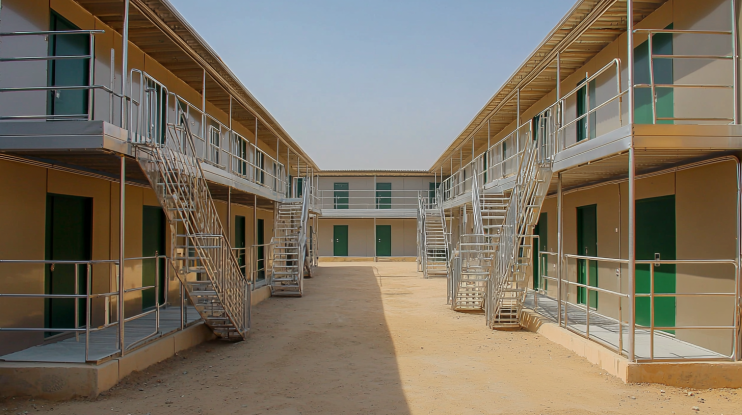
Triple-storey prefab labor colony with silver GI frames, green doors, and 20 rooms in a desert project.
Customization and Design Flexibility: Tailored to Your Needs
Customization is a major benefit of prefabricated labor colonies. These colonies can be tailored to meet the specific needs of a project or workforce. Whether it’s the layout, amenities, or the number of units, companies have the flexibility to design a colony that fits their exact requirements.
Design flexibility means companies can choose how the space is used. Some might need more communal areas, while others might focus on individual rooms. Prefabricated colonies allow for these choices, ensuring that the housing meets the needs of the workforce.
Customization also extends to the aesthetic aspects of the colony. Companies can choose finishes, colors, and other design elements that align with their brand or project goals. This attention to detail not only improves the appearance of the colony but also creates a more pleasant environment for workers. Ultimately, the ability to customize and design flexible solutions makes prefabricated labor colonies a versatile option for any project.
Tailor prefabricated colonies to meet specific project needs. Discover Customization Options for creating ideal worker environments.
Technological Integration: Smart Solutions for Modern Living
Technology plays a vital role in modern prefabricated labor colonies. These colonies can be equipped with smart systems that automate and improve daily living conditions. Smart technology makes living in these colonies more comfortable and efficient.
One important feature is automated climate control. This system adjusts the temperature based on the weather and the preferences of the workers. It ensures that the living spaces are always comfortable without wasting energy. This not only improves comfort but also helps in reducing operational costs.
Security is another area where technology shines. Advanced security systems can include surveillance cameras, secure access controls, and alarms. These systems protect the colony from potential threats and ensure the safety of the workers. In addition to security, entertainment options such as Wi-Fi and television keep workers connected and entertained during their downtime, enhancing their overall well-being.

Double-storey prefab labor colony with black GI frames, blue windows, and 16 rooms in a mountainous tunnel project.
Fast Track to Compliance: Navigating Regulatory Challenges
Meeting regulatory requirements is a crucial aspect of any construction project. Prefabricated labor colonies simplify this process by being designed to meet or exceed local and international building codes and labor laws. This makes it easier for companies to remain compliant and avoid legal issues.
Prefabricated colonies often come with pre-approvals from regulatory bodies, speeding up the approval process. This quick compliance helps reduce the time and resources needed to get the colony operational. Companies can start housing workers faster, keeping the project on schedule.
In addition to meeting standard regulations, these colonies can be customized to address specific legal requirements. For example, they can include features for accessibility or energy efficiency that may be required by local laws. This flexibility ensures that prefabricated labor colonies are fully compliant with all necessary regulations, providing peace of mind for companies.
Prefabricated colonies ensure compliance with safety standards. See Compliance in Action through a successful implementation example.
Social and Cultural Considerations: Inclusive Worker Housing
When designing worker housing, it’s important to consider the social and cultural needs of the workforce. Prefabricated labor colonies can be customized to meet these diverse needs, creating an inclusive and respectful living environment for all workers.
These colonies can include spaces for cultural practices, such as prayer rooms or specific cooking facilities. By accommodating these needs, companies can show respect for the cultural diversity of their workforce, which can improve morale and reduce turnover.
Creating social spaces is also key. Prefabricated colonies can include communal areas where workers can relax, socialize, and build a sense of community. These areas help foster positive relationships among workers, leading to a more harmonious work environment. An inclusive design that respects social and cultural differences can lead to higher job satisfaction and better overall performance.

Single-storey prefab labor colony with green GI frames, brown doors, and 10 rooms near a highway construction.
Future-Proofing Your Labor Colony: Adapting to Industry Trends
Future-proofing is essential for any long-term investment, including worker housing. Prefabricated labor colonies are designed with adaptability in mind, allowing them to keep pace with changing industry trends and technological advancements.
One major trend is sustainability. As environmental concerns grow, so does the demand for green construction practices. Prefabricated colonies can easily integrate sustainable technologies like solar panels and energy-efficient systems. This not only reduces the environmental impact but also ensures that the colony remains relevant as industry standards evolve.
Another trend is the increasing use of smart technology in worker housing. Prefabricated colonies can be equipped with the latest innovations, such as automated lighting, climate control, and security systems. By staying ahead of these trends, companies can ensure that their labor colonies remain functional and attractive to workers in the future.
Stay ahead of industry trends with adaptable prefabricated colonies. Compare Labor Hutments vs. Traditional Housing for future-proof solutions.
Integration with Site Infrastructure: Seamless Operations
Integrating prefabricated labor colonies with existing site infrastructure is key to seamless operations. These colonies are designed to connect easily to utilities such as water, electricity, and waste management systems. Proper integration ensures that workers have access to all the necessary services for daily living.
Before installation, companies should assess the site’s infrastructure to plan the best way to connect the prefabricated colony. This planning might involve coordinating with utility providers or making adjustments to the layout to fit available resources. By ensuring that everything is set up correctly from the start, companies can avoid disruptions and ensure that the colony operates smoothly.
Good integration also extends to transportation networks. Prefabricated colonies should be easily accessible, with good connections to roads and parking areas. This ensures that workers can travel to and from the site without difficulty. Considering all these factors during the planning phase will help create a well-integrated, efficient living environment.
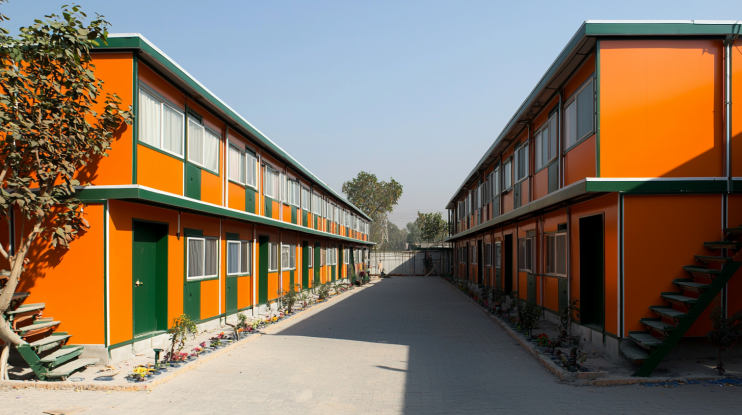
Single-storey prefab labor colony with grey GI frames, red windows, and 16 rooms at a remote oil site.
Case Studies: Successful Implementation of Prefabricated Labor Colonies
Real-world examples can highlight the benefits of prefabricated labor colonies. Case studies from successful projects show how these colonies have been used effectively to meet housing needs in different construction environments.
One case study might involve a large infrastructure project where prefabricated labor colonies were used to house thousands of workers. The modular design allowed for rapid expansion as the project grew, demonstrating the flexibility of prefabricated solutions. The company saved time and money while providing high-quality housing for its workforce.
Another case study could focus on a remote construction site where traditional housing options were not feasible. Prefabricated labor colonies provided durable, weather-resistant accommodations that kept workers safe and comfortable in challenging conditions. These examples show how prefabricated colonies can be tailored to meet the unique demands of various projects, making them a versatile and reliable choice.
Case studies highlight the effectiveness of prefabricated colonies. Review a Successful Prefab Labour Colony Project to see the benefits in practice.
ROI Analysis: Calculating the Value of Prefabricated Labor Colonies
Calculating the return on investment (ROI) for prefabricated labor colonies is essential for understanding their financial benefits. These colonies often offer a high ROI due to their cost efficiency, durability, and quick installation.
The initial savings on construction costs are significant. Prefabricated colonies are generally less expensive to build than traditional structures. In addition, the durability of these colonies means that they require less maintenance over time, further reducing costs. This combination of lower upfront costs and reduced long-term expenses results in a strong ROI.
Beyond financial savings, the ROI analysis should also consider the intangible benefits of prefabricated colonies. These might include improved worker satisfaction and retention, which can lead to higher productivity and lower turnover rates. By taking a comprehensive approach to ROI analysis, companies can see the full value of investing in prefabricated labor colonies.

Single-storey prefab labor colony with white GI frames, black windows, and 10 rooms near a dam
Reducing Downtime: Keeping Projects on Schedule
Reducing downtime is crucial for keeping construction projects on schedule. Prefabricated labor colonies help minimize delays by providing quick, efficient housing solutions for workers. Traditional buildings can take months to complete, causing potential delays. Prefabricated colonies, however, can be set up and ready for use in just a few weeks.
This quick setup means workers can be housed and ready to start their tasks sooner, which helps keep the project on track. By minimizing the time spent waiting for housing to be completed, companies can avoid costly delays and keep their projects moving forward.
Moreover, prefabricated colonies are designed for easy maintenance, which reduces the risk of unexpected downtime due to repairs. The durable materials used in these colonies are resistant to wear and tear, ensuring that they stay operational throughout the project. This reliability helps keep projects on schedule and within budget.
Overcoming Logistical Challenges: Simplifying the Setup Process
Setting up worker housing can be challenging, especially in remote or difficult-to-access locations. Prefabricated labor colonies simplify this process by offering modular units that are easy to transport and assemble. These units can be shipped to the site in sections and quickly assembled, reducing the complexity of the setup process.
One of the main advantages of prefabricated labor colonies is their portability. The units are designed to be moved easily, making them ideal for projects that require frequent relocation. This flexibility allows companies to overcome logistical challenges and ensure that their workers have reliable housing, no matter where the project takes them.
In addition to transportation and assembly, prefabricated labor colonies also simplify the connection to utilities and other site infrastructure. The units are pre-designed with the necessary hookups, making it easy to connect them to water, electricity, and waste management systems. This streamlined setup process reduces the time and resources needed to get the colony up and running, allowing the project to proceed smoothly.

Triple-storey prefab labor colony with green GI frames, yellow doors, and 20 rooms at a bridge construction site.
Conclusion: The Strategic Benefits of Choosing Prefabricated Labor Colonies
In conclusion, prefabricated labor colonies offer a range of strategic benefits for construction projects. They are cost-effective, quick to install, and flexible enough to meet changing needs. These colonies are designed to provide safe, comfortable housing for workers, which improves productivity and satisfaction.
Choosing prefabricated labor colonies also demonstrates a commitment to worker well-being. These colonies include modern amenities and safety features, ensuring that workers are well-cared for. This focus on quality housing can reduce turnover and boost morale, leading to a more stable and productive workforce.
As the construction industry continues to evolve, the demand for efficient and adaptable housing solutions will only grow. Prefabricated labor colonies are well-positioned to meet this demand, offering a reliable and cost-effective option for companies worldwide. By investing in these colonies, companies can ensure that their workforce is well-supported, leading to successful project outcomes.
FAQs About Prefabricated Labor Colonies
Q1: What is a prefabricated labor colony?
A1: A prefabricated labor colony is a type of temporary housing made from prefabricated materials. The components are manufactured in a factory and then assembled on-site. This method is faster, more cost-effective, and allows for flexibility in design and customization compared to traditional construction methods.
Q2: What are the benefits of using prefabricated labor colonies?
A2: Prefabricated labor colonies offer several benefits, including cost savings, quick construction, flexibility, and environmental sustainability. They are built faster than traditional buildings, are cheaper due to lower labor and material costs, and can be easily expanded or modified. Additionally, they generate less waste and often use recyclable materials.
Q3: How long does it take to build a prefabricated labor colony?
A3: The construction of a prefabricated labor colony typically takes a few weeks, depending on the size and complexity of the project. This is significantly faster than traditional construction, which can take several months.
Q4: Are prefabricated labor colonies durable?
A4: Yes, prefabricated labor colonies are designed to be durable and withstand various weather conditions. They are constructed under strict quality controls in a factory setting, ensuring that each unit meets high standards of safety and longevity.
Q5: Can prefabricated labor colonies be customized?
A5: Absolutely. Prefabricated labor colonies can be customized to meet specific needs. This includes selecting different layouts, materials, and amenities to suit the requirements of the workers and the project.
Q6: How do prefabricated labor colonies contribute to sustainability?
A6: Prefabricated labor colonies are more sustainable than traditional buildings. They generate less waste during construction, use materials more efficiently, and often incorporate energy-saving features like insulation and recyclable materials. This makes them an environmentally friendly option.
Q7: What types of facilities can be included in a prefabricated labor colony?
A7: Prefabricated labor colonies can include various facilities such as living quarters, kitchens, bathrooms, recreational areas, and even medical rooms. These facilities ensure that workers have everything they need for a comfortable stay while working on-site.
Q8: Are prefabricated labor colonies portable?
A8: Yes, one of the key advantages of prefabricated labor colonies is their portability. These colonies can be disassembled, transported, and reassembled at new sites, making them ideal for projects that move locations.
Q9: How do prefabricated labor colonies impact worker productivity?
A9: Prefabricated labor colonies positively impact worker productivity by providing safe, comfortable, and well-equipped living spaces. When workers are well-rested and have access to necessary amenities, their productivity and job satisfaction tend to increase.
Q10: Why are prefabricated labor colonies important in cities like Bangalore?
A10: In rapidly growing cities like Bangalore, where the construction boom is constant, prefabricated labor colonies are crucial. They provide quick, affordable, and scalable housing solutions for the large workforce needed to support ongoing infrastructure and building projects.
 Container Cafe
Container Cafe

